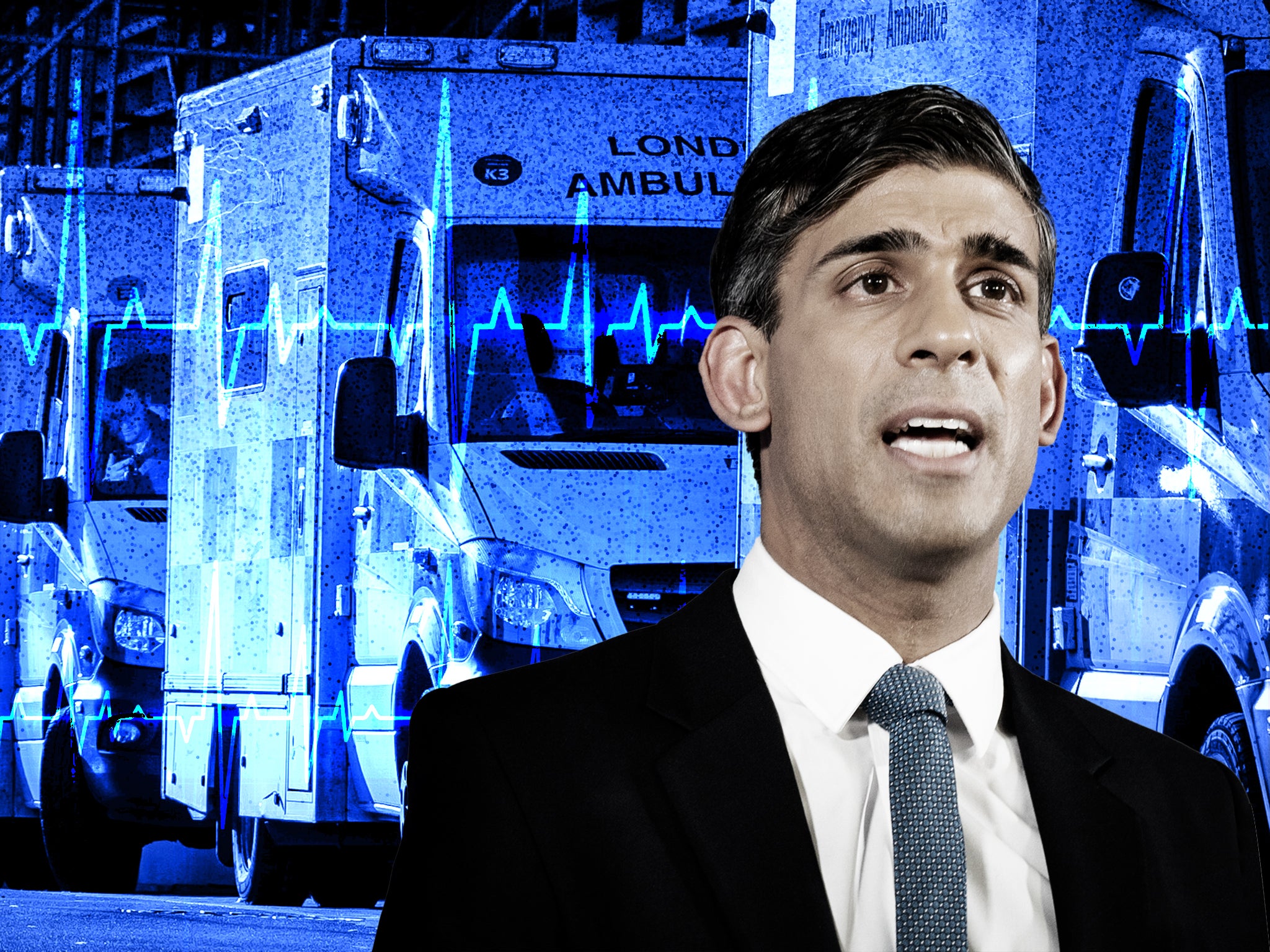Rishi Sunak’s pledge misses the real issue behind the NHS crisis
As one of his five pledges to the British public, Rishi Sunak promised to reduce NHS waiting times. Dr Alexis Paton examines whether it can be done


On 4 January, prime minister Rishi Sunak laid out a plan for achieving a new, less shambolic era of Conservative government by tackling five key areas of concern for Britain. His pledge regarding the NHS, specifically the ever-growing waiting list for treatment of more than 7 million people, misses the point.
In his speech, Sunak promised “no tricks”, but this is somewhat hard to believe when his NHS pledge feels at best like a sleight of hand, and at worst an insult to the nation’s intelligence. But, we all set goals in January with good intentions, so given the high stakes of the prime minister’s promise, it’s worth asking: can it be done?
With roughly 10 per cent of the population currently on waiting lists, it’s an important question and the answer is, well, yes, it can. In fact, reducing wait times is already on the NHS agenda, with the goal to eliminate wait times longer than a year for all elective care by March 2025. The NHS developed this plan almost a year ago, in February 2022, when Rishi Sunak was not prime minister.
I’m not sure piggy-backing on existing policy and announcing it as fresh is playing fair. It is also worth noting that the plan is just for elective care, so what about everything else? While elective care wait times need to be reduced, it is primary and secondary care that are currently drowning, and ultimately impact on the ability to reduce wait time at all.
It is no secret that the NHS is struggling this winter. Elective care aside, primary care (GPs, dentists, opticians and pharmacists) and secondary care (most everything else in hospitals) cannot cope with the current demands. This is pushing the NHS beyond its abilities to meet both short (such as A&E) and medium (such as specialist referral) wait time targets.
At present, the NHS has a stated target that no patient should wait longer than 18 weeks for consultant-led, non-urgent care. But with nowhere for patients to go, no flow through and out of hospital, not enough staff to facilitate safe and expedient care and no social care to discharge patients into, it is no surprise the system has failed.
It is true that the PM has addressed these concerns. He started his speech by promising to increase bed capacity by 7,000 and to provide new funding for discharge into social care and the community. But exactly who will be caring at these beds and where in the community are these people going? Unlike elective care wait times, this promise cannot be fulfilled. Just as ventilation machines in the pandemic are just machinery without intensivists to run them, extra hospital beds are just useless furniture without healthcare staff to care at those bedsides.
To anyone who cries, “Oh come one, at least he’s trying”, I have to disagree. That this promise must go unfulfilled should come as no shock to our leader. Only six months ago, the King’s Fund analysed the situation and found the NHS cannot improve wait times or increase caring capacity without first investing in more staff.
Reduced wait times require more hospital beds. More beds require more staff. More staff require more money – money the PM has said will not be forthcoming in the public sector. The current NHS budget is insufficient to meet the present and future needs of the patients who require care, and so, a week into the new year, it’s clear that nothing is really going to change.
This pledge will come to nothing, but it doesn’t have to be that way. Twelve years of austerity and devaluing the NHS, coupled with a “just in time” approach to healthcare service provision borrowed from the supermarket industry has led us to this point – but we could change that.
By concretely tackling the workforce crisis, engaging with striking healthcare staff, creating a long-term, cross-party plan of action for reducing wait times, by increasing funding to recruit sufficient staff numbers and maintain NHS infrastructure, Rishi Sunak can fulfil his promise.
The real question is not whether the NHS wait times can really be reduced, but whether the PM is willing to reach into the treasury’s pockets and fund that pledge. Frankly, I’m not holding my breath. Despite the consequences paid for in human lives, the Tories have doggedly pursued a deadly combination of austerity and health libertarianism for well over a decade – and we all know, even with the best of new year intentions, old habits are hard to break.
Dr Alexis Paton is a lecturer in social epidemiology and the sociology of health, and co-director of the Centre for Health and Society at Aston University
Join our commenting forum
Join thought-provoking conversations, follow other Independent readers and see their replies
Comments